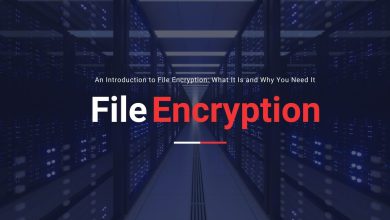
You may have heard that cyber threats are constantly evolving to become more sophisticated and are increasing in number. That’s true, but it’s not the whole story. For instance, in 2022 there were more than 493 million ransomware attacks. Although that’s a big number, it’s also a 21% decline year-over-year.
Cybercrime overall does tend to increase each year, but that doesn’t mean it’s also getting harder to stay protected. The truth is, that basic cybersecurity protocols never change, and if you stick with the fundamentals for protection, you’ll be okay.
What are cybersecurity fundamentals?
There are three main categories for protecting yourself against cybercrime: prevention, intervention, and recovery. This applies to every business; even small retail shops and fleet maintenance teams need to take cyber security seriously.
1. Prevention
Prevention involves taking measures to prevent attacks from happening in the first place, like using firewalls, and antivirus software, and having strict download policies for workers. It also includes encrypting your data end-to-end so that if any data gets stolen, it can’t be read. This is the only way to avoid regulatory fines in the case of a successful data breach.
2. Intervention
Intervention is when an attack is executed, but is stopped before it can do damage. An example of this would be when your automated threat detection software isolates a threat, or when your employees recognize a phishing email and ignore it.
3. Recovery
Recovery is being able to rebuild after a successful attack because you have a disaster recovery plan. For example, if you get hit with ransomware, you don’t have to entertain the hacker’s demands for money because you can just reformat the hard drive or buy a new device and reinstall your files and software.
Why cybersecurity basics never change
You might be wondering if threats are evolving all the time to become more complex, why don’t the basics of cybersecurity change to match? That’s a great question, and the answer is simple. It’s not your job to track and dissect every new threat that emerges. That’s what cybersecurity experts do in order to update the tools we all use to protect our devices and networks.
Anytime a new threat is identified, antivirus software, along with other forms of software-based detection, adds those new indicators to their database and releases an update. As long as you’re downloading updates in a timely manner, you don’t have to worry about missing out on the latest protection.
Your only job is to install, use, and update the right software. Here are some of the software applications that help to prevent, thwart, and reduce the damage from cyberattacks:
- Antivirus software. Whether you use free antivirus software like Avast, AVG, or Defender, or a paid option like Norton or CrowdStrike, you can’t skip this essential. When installed and active, everything you do will be scanned, from your emails and web pages you visit to files you download. You’ll be alerted if anything is infected, and threats will be automatically quarantined.
- Firewalls. Both standard and next-generation firewalls are used to protect networks used for business and home use.
- Automated threat detection. This applies to networks, endpoints, mobile devices, and applications. It’s especially critical in a cloud environment since a large number of cyber attacks take place in the cloud.
- Zero trust architecture. This is a broad type of security, but the premise is “never trust, always verify.” Zero trust utilizes role-based access controls to verify logins. In the case of network access, the system will only grant access when the user is using a verified device in addition to having correct login credentials. Zero trust is also used to secure endpoints, like laptops and smartphones.
Which applications do you need?
The security applications listed above are just examples of some of the most common ways to prevent cybersecurity incidents. Which ones you need will depend on where your data is stored and how you run your business. For example, if you don’t have a network, you don’t need everything that large corporations use.
You might be fine with local protection on your devices. However, you will need to keep your website software updated to stay secure. Your web host should be responsible for securing the server, but you are responsible for updating your content management system core files and plugins/extensions.
Too confusing? Talk to a pro
If you’re not certain about what you need or which application is the best choice, consult with an IT security pro to get their recommendations. They’ll tell you what to buy and they’ll even help you install and configure your applications to ensure you are fully protected.




